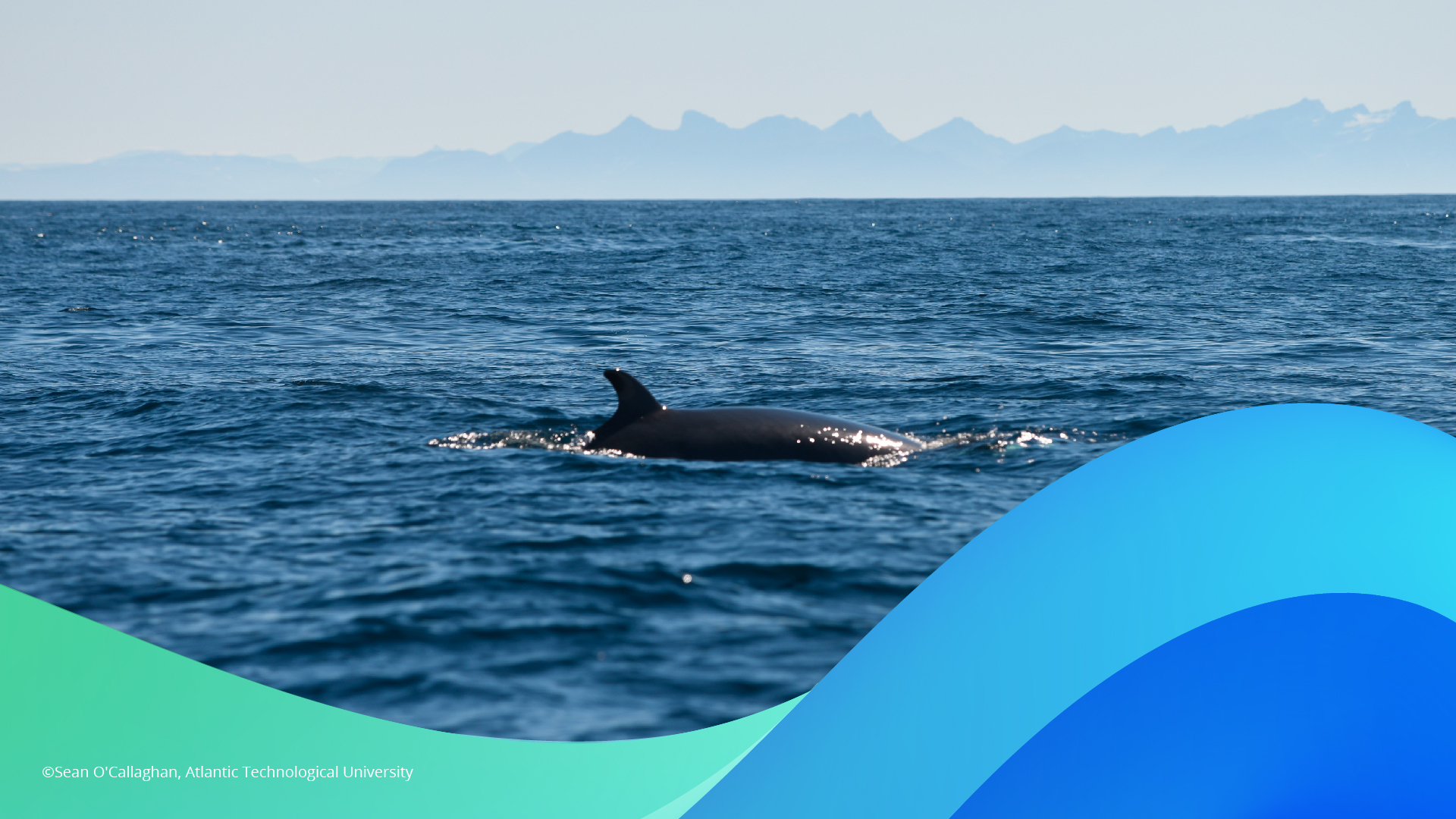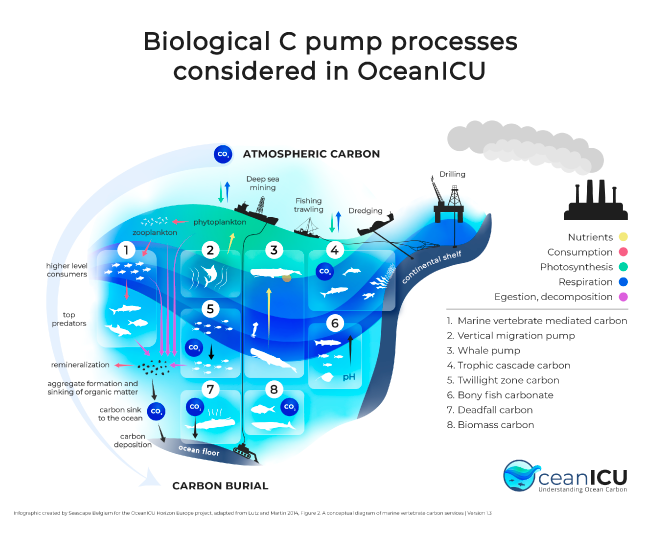WEBINAR 1
- Moderator: Dr. Richard Sanders
- 28 September 2023 | 2 PM
OceanICU Inaugural Webinar
The first OceanICU webinar was successfully held on the 28th of September.
If you are interested in refreshing what you saw or discovering what you missed, you can watch the video recording of the webinar or peruse the presentation and check out additional questions from the audience that were not covered during our online event.
MEET THE PANELLISTS

Andrew Watson FRS
Royal Society Research Professor, Global Systems Institute, University of Exeter

Carla Freitas
Senior Researcher, Marine Biologist, Institute of Marine Research in Norway, with focus on top predator ecology

Morten D. Skogen
Research Scientist, Ecosystem Modelling Institute of Marine Research, Bergen Norway

Pernille Schnoor
Senior Researcher, Ocean Social Scientist, World Maritime University. Former member of the Danish Parliament
And if you are interested in learning more about the whale carbon research of Carla Freitas and Morten Skogen, please read their informative article.
HOW IMPORTANT ARE WHALES IN THE OCEANIC CARBON CYCLE?
OceanICU colleagues Dr. Carla Freitas and Morten Skogen, of the Institute of Marine Research (IMR) in Norway recently joined Richard Sanders, Andrew Watson and Pernille Schnoor for the first OceanICU webinar. Read on to learn about their important research! 600 tonnes of poo each day! That’s the estimate of excretion …
Questions from the audience

Answered by Carla Frietas
We don’t know yet. There has been a lot of uncertainty around parameters, and a lot of speculation. Irrespectively if their effect is large or small at regional or larger scales, the important is to get a robust understanding and a robust quantification of their impact on carbon cycling and a better understanding of their role on marine ecosystems in general – and that’s what we are trying to obtain.
The last abundance estimates indicate 11,000 fin whales, 10,000 humpbacks, and 150,000 minke whales in the Nordic Seas (North Sea, Greenland Sea, Norwegian Sea and Barents Sea). This is an important feeding area for these whales in the North Atlantic. Every year, they migrate from their winter breeding areas in low latitudes (tropical and temperate regions) to forage during summer in these productive waters. Their presence in the area coincides with the time of the year when there is a lack of nutrient at the surface – during summer stratification, after spring, phytoplankton blooms have used available nutrients. So their presence seems to be well timed.
In addition to these seasonal whales, there are year-round residents, such as sperm whales, killer whales, other toothed whales, dolphins, ice-associated seals, etc. They are all expected to contribute in some way to nutrient enrichment in surface waters and to carbon cycling in general.
A minke whale excretes around 40 kg poo per day during the summer feeding season. For a population of 15 000 whales in the Svalbard area, it corresponds to approximately 600 tonnes of feces per day, containing 10 tonnes of phosphorus and 7 tonnes of nitrogen each day. You can read more about it here.
In addition to these seasonal whales, there are year-round residents, such as sperm whales, killer whales, other toothed whales, dolphins, ice-associated seals, etc. They are all expected to contribute in some way to nutrient enrichment in surface waters and to carbon cycling in general.
The tags we are using send data through satellites. Tags fall off on their own after a few days, with no harm to the whales.

Answered by Pernille Schnoor
Policy making is a complex discipline. It is naive to think that sharing policy briefs to policy makers will make a huge difference. It is a step in the right direction of ‘translating’ scientific language to non-scientist, but it is definitely not enough. Just like policy makers need to be more ocean literate, ocean scientists need to be more policy literate. Policy decision making has to do with framing messages to the public. If the voters ask for change, policy makers will make changes. Scientists need to be more inclusive in their communication and to be able to communicate to multiple stakeholders. It is a huge task, but it needs to be done.


